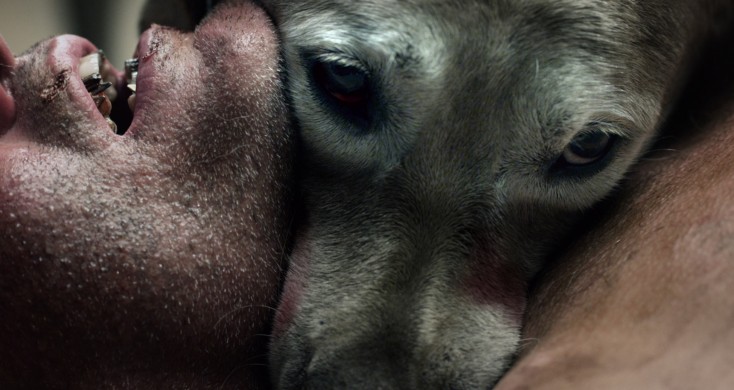
“D is for Dogfight” is one of 26 short films that make up “The ABCs of Death” © 2012 Magnet Releasing
By JAMES DAWSON
Front Row Features Film Critic
Brutal, silly, offensive, poignant, amateurishly cheap and unexpectedly elaborate, the 26 short films that make up “The ABCs of Death” have nearly nothing in common except the obvious. In all of these tiny tales, shot in 15 countries by an international roster of directors, somebody or something dies. (It is available On Demand January 31, and in theaters March 8.)
Each vignette is devoted to a topic corresponding to words beginning with successive letters of the alphabet (“A is for Apocalypse,” “B is for Bigfoot,” etc.). The project was assembled by producers Ant Timpson and Alamo Drafthouse CEO Tim League. With a total running time of 129 minutes, none of the bits lingers for long.
That miniature film-festival format has its good and bad points. While some segments here are so interesting and full of potential that they seem to have been cut off in their prime (such as a videogame-violent science-fiction shoot-’em-up set in a dystopian future Vancouver, directed by comic-book writer/artist Kaare Andrews), it’s a mercy that the plug is pulled quickly on others (such as a dopey clown-zombies disaster directed by Jon Schnepp, or a suicide ritual consisting mostly of goofy facial close-ups directed by Yudai Yamaguchi).
The title of each segment is not revealed until its individual fade-to-red ending. That’s a clever way to avoid spoiling the punchlines of each piece by keeping viewers guessing as to what form each final departure will take. A few titles are sufficiently unspecific (“Exterminate”), ambiguous (“Nuptials”), obvious (“Dogfight”) or exotic (“Zetsumetsu”) that putting them upfront would not have ruined any plot points.
Other titles that I won’t give away come as surprises that are amusing (as in Noboro Iguchi’s bizarrely hilarious Japanese schoolgirls fantasy), disturbing (in “The Innkeepers” writer/director Ti West’s shockingly inappropriate take on a sensitive subject) or turn out to have double meanings (in Simon Rumley’s morality tale of an impoverished prostitute, and in “The Divide” director Xavier Gens’ social commentary about a bullied overweight woman).
The most disturbing segment by far is Timo Tjahjanto’s “L is for Libido,” which manages to encompass bondage, masturbation, torture, murder and pedophilia. The movie begins with a “no one under 18” warning that should be taken very seriously, in other words.
Two of the films are impressively goth-video arty (“A Serbian Film” director/writer Srdjan Spasojevic’s hospital horror “R is for Removed,” Jake West’s outrageous run-from-the-reaper “S is for Speed”), while some look like nothing-special student projects (Ernesto Diaz Espinoza’s “C is for Cycle,” Andrew Traucki’s “G is for Gravity,” Adam Wingard and Simon Barrett’s “Q is for Quack”). The most wildly creative may be Yoshihiro Nishimura’s “Z is for Zetsumetsu,” an utterly over-the-top politically motivated mashup of “Dr. Strangelove,” a swastika-wearing dominatrix with a giant phallus and a rather unsavory stew.
Two bathroom-centered segments are Anders Morgenthaler’s revenge-of-the-poo “K is for Klutz,” which is line-art animated, and Lee Hardcastle’s monstrous “Toilet,” a gruesome stop-motion farce made with modeling-clay figures and sets.
Enough of the movie is sufficiently unpleasant to make some viewers (such as the one who was sitting next to me) wish they could “unwatch” it, so be aware that this is a bumpy ride. (As one character says to another in a noxiously disgusting version of the afterlife, “Let us pass between the boundaries of good taste.”) But a few of these small doses of poison are intriguing enough to make it worth suffering through the others before you head for the exit.





